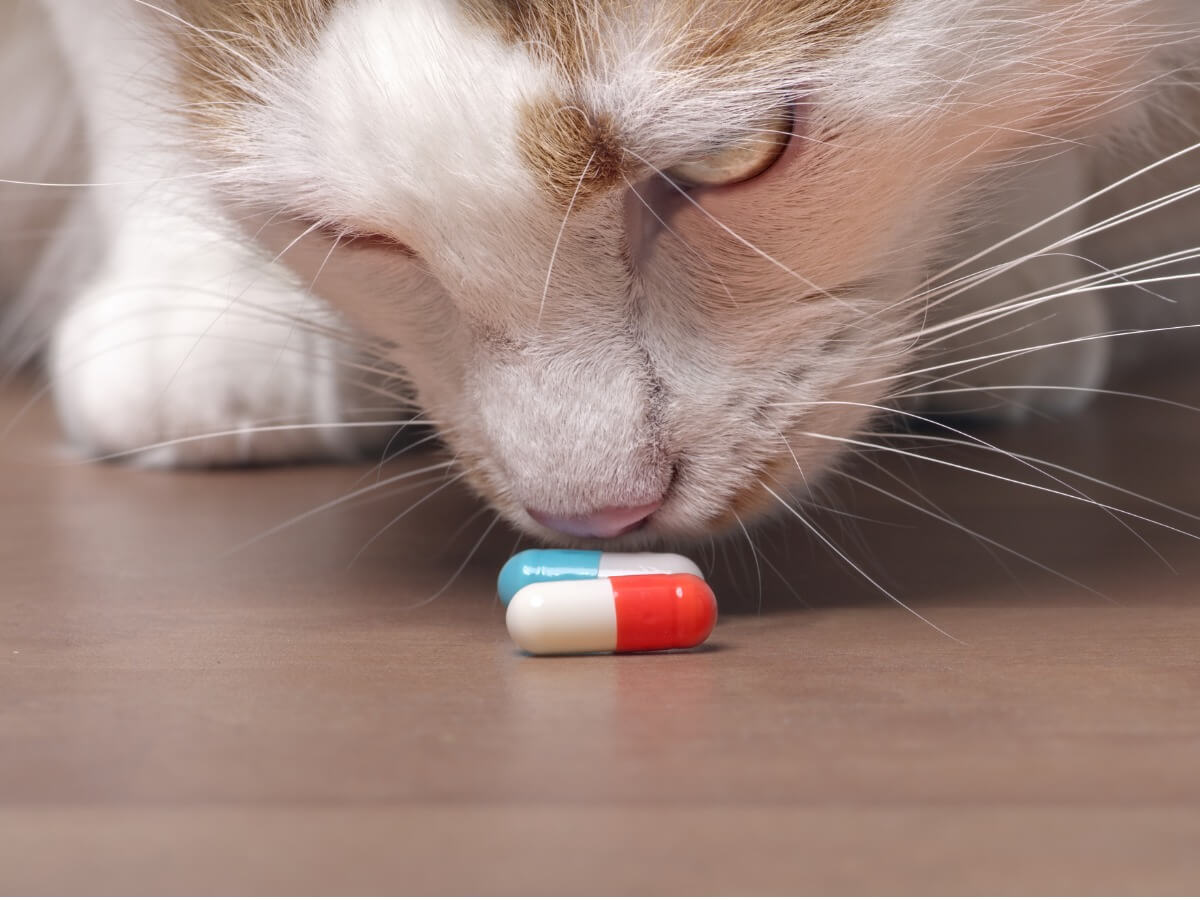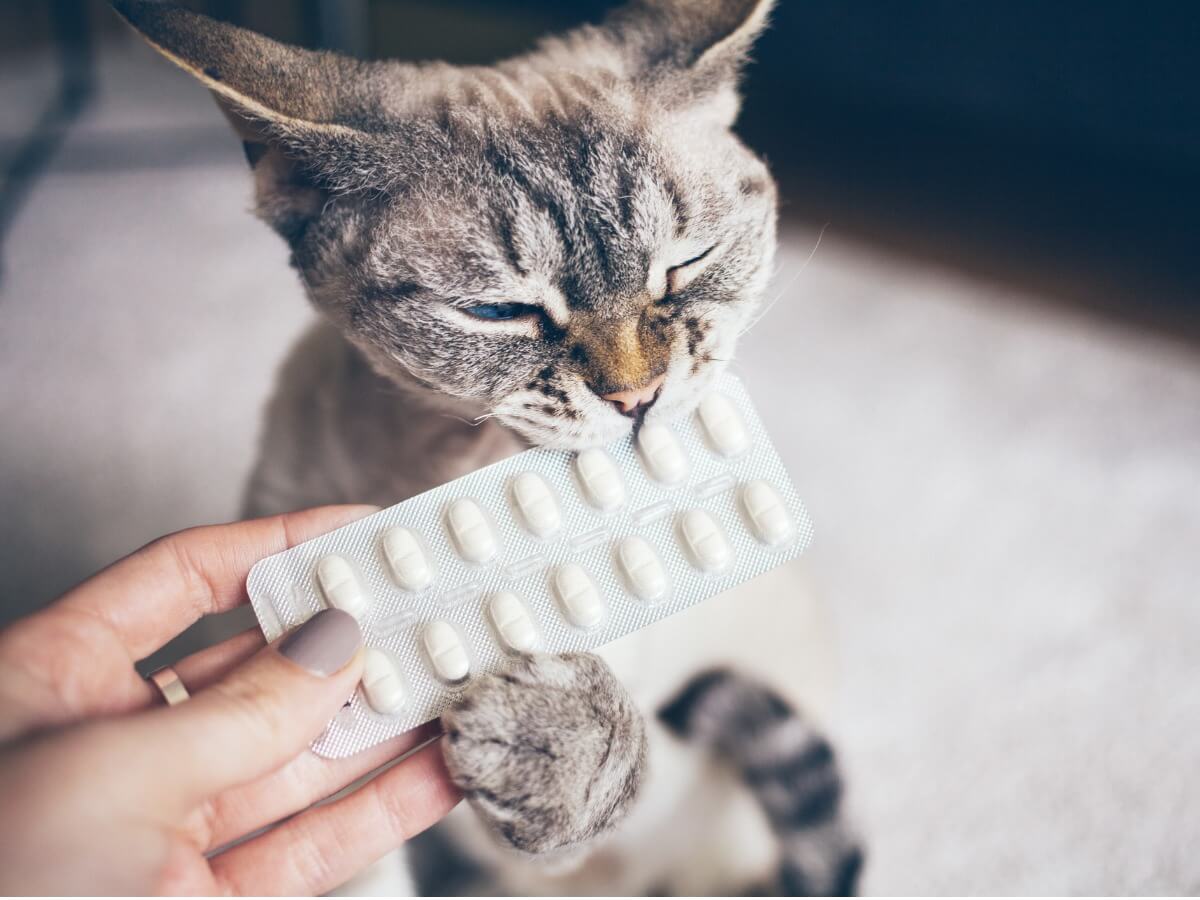Buprex for Cats: Dosage and Side Effects


Reviewed and approved by the biologist Samuel Sanchez
Buprex for cats is an analgesic drug that can be administered to felines as long as it’s done on veterinary recommendation. This is something that must be taken into account, as the administration of medication in pets without professional advice could even be fatal.
This pain reliever serves various purposes and is administered in different ways in the correct doses, but even then, it can cause side effects in the feline. In the following article, we’ll cover everything you need to know about buprex in the feline treatment.
What is buprex for cats?
When we talk about buprex we’re referring to the trade name assigned to buprenorphine. It’s an opiate derived from morphine, which can be used both in humans and in veterinary medicine and whose administration acts on the opioid receptors of the central nervous system (CNS).
It has a fairly short response time, as after 15 minutes of application it already begins to act, although it’ll take up to 30-40 minutes for its effects to be more evident and an hour for them to reach their maximum. After this, as experts indicate, its period of action is 4 to 8 hours (longer than morphine). Buprex is given either intravenously or intramuscularly.
These two routes mentioned are the most common, although it should be noted that they aren’t the only ones. In cats, the drug can also be administered via the oral or subcutaneous transmucosal route. Of course, according to some studies, it has been concluded that intramuscular and intravenous administration provides better analgesia after operations than the other two.

Uses of buprex for cats
Due to the cat’s characteristics (they’re animals that don’t usually complain), managing pain can be difficult for the professional. In addition, it must be considered that this clinical sign will vary in intensity depending on the feline. In either case, buprex may be an option to treat it.
There are several clinical situations that cats may face in which the administration of buprex is required. Some of them are listed below:
- Chronic pain: In the case of chronic pain in the cat, buprex can be used, but as a second line of action. NSAIDs (non-steroidal anti-inflammatory drugs) will be the first to be administered and buprex will serve to enhance their action.
- Postoperative analgesia: Without a doubt, this is one of the best-known uses of this medicine, as it considerably reduces the discomfort that the cat may suffer after an operation.
- Preoperative analgesia: Another option is to administer buprex to the animal before the intervention, preparing it for general anesthesia.
- Acute infections: Sometimes, when some analgesics are contraindicated in acute cat infection due to their side effects, others are used. Buprex may be an option in some of these cases.
Buprex dosage for cats
To know what is the corresponding dose of buprex for a feline, four fundamental aspects must be taken into account:
- The cause that determined its use.
- The selected route of administration.
- The cat’s general state of health.
- The exact weight of the cat at that time.
The veterinary professional is in charge of finding out this information. Therefore, only they are the ones trained to know what the recommended dose is. In addition, the administration varies between ranges. For example, for an application after intravenous surgery, it’s normal to administer between 0.01 and 0.02 milliliters per kilogram of the animal and repeat the dose after 2 hours.
Contraindications of buprex for cats
There are cases in which the administration of this drug is not recommended in cats. These are the most frequent:
- Liver problems, either due to kidney or liver failure.
- Heart problems or the cat being in shock.
- Cesarean section: If the cat’s pregnancy ends in a cesarean section, it isn’t advisable to use buprex before the intervention, as it can affect the correct breathing of the fetuses. Neither is it appropriate to use it on the cat after a cesarean section.
- Respiratory problems: If the feline suffers from breathing problems, this drug can further affect its respiratory rate, and so a thorough assessment should be performed before administering it.
- Cats that are allergic to its active ingredient.
Other considerations to keep in mind if buprex is to be administered to the cat
In addition to the aforementioned conditions, it’s also important to bear in mind that taking certain medications can cause a conflict with buprex, so this information should always be taken into account. If a cat is taking another drug and, for whatever reason, is being treated by another professional, they should be told this if they want to apply buprex.
In cats that have suffered a head injury, its administration should be carefully evaluated, as well as in the case of kittens that aren’t older than 7 weeks of life, or in pregnant or lactating cats. This is so because the possible effects in the specific cases of these animals aren’t known for sure.
Side effects of buprex for cats
Like any medication, buprex can cause side effects in felines that have been given this pain reliever. Normally, these effects subside naturally within 24 hours and some of them are the following:
- Restlessness
- Respiratory depression
- Euphoria
- Sedation
- Sickness
- Vomiting
- Pupil dilation
- Continuous purr
- Drowsiness
- Incessant rubbing against objects, people, or animals
For all the aforementioned symptoms, the animal must always be supervised after providing this or any other medicine. If any of these symptoms appear on a sustained basis, don’t hesitate to visit the vet right away.

As you may have seen, buprex is a widely-used drug in the veterinary clinic. It’s an effective and relatively safe analgesic, but contraindications must be taken into account before prescribing it to the animal. Remember: never medicate your pet without the supervision of a veterinarian.
Buprex for cats is an analgesic drug that can be administered to felines as long as it’s done on veterinary recommendation. This is something that must be taken into account, as the administration of medication in pets without professional advice could even be fatal.
This pain reliever serves various purposes and is administered in different ways in the correct doses, but even then, it can cause side effects in the feline. In the following article, we’ll cover everything you need to know about buprex in the feline treatment.
What is buprex for cats?
When we talk about buprex we’re referring to the trade name assigned to buprenorphine. It’s an opiate derived from morphine, which can be used both in humans and in veterinary medicine and whose administration acts on the opioid receptors of the central nervous system (CNS).
It has a fairly short response time, as after 15 minutes of application it already begins to act, although it’ll take up to 30-40 minutes for its effects to be more evident and an hour for them to reach their maximum. After this, as experts indicate, its period of action is 4 to 8 hours (longer than morphine). Buprex is given either intravenously or intramuscularly.
These two routes mentioned are the most common, although it should be noted that they aren’t the only ones. In cats, the drug can also be administered via the oral or subcutaneous transmucosal route. Of course, according to some studies, it has been concluded that intramuscular and intravenous administration provides better analgesia after operations than the other two.

Uses of buprex for cats
Due to the cat’s characteristics (they’re animals that don’t usually complain), managing pain can be difficult for the professional. In addition, it must be considered that this clinical sign will vary in intensity depending on the feline. In either case, buprex may be an option to treat it.
There are several clinical situations that cats may face in which the administration of buprex is required. Some of them are listed below:
- Chronic pain: In the case of chronic pain in the cat, buprex can be used, but as a second line of action. NSAIDs (non-steroidal anti-inflammatory drugs) will be the first to be administered and buprex will serve to enhance their action.
- Postoperative analgesia: Without a doubt, this is one of the best-known uses of this medicine, as it considerably reduces the discomfort that the cat may suffer after an operation.
- Preoperative analgesia: Another option is to administer buprex to the animal before the intervention, preparing it for general anesthesia.
- Acute infections: Sometimes, when some analgesics are contraindicated in acute cat infection due to their side effects, others are used. Buprex may be an option in some of these cases.
Buprex dosage for cats
To know what is the corresponding dose of buprex for a feline, four fundamental aspects must be taken into account:
- The cause that determined its use.
- The selected route of administration.
- The cat’s general state of health.
- The exact weight of the cat at that time.
The veterinary professional is in charge of finding out this information. Therefore, only they are the ones trained to know what the recommended dose is. In addition, the administration varies between ranges. For example, for an application after intravenous surgery, it’s normal to administer between 0.01 and 0.02 milliliters per kilogram of the animal and repeat the dose after 2 hours.
Contraindications of buprex for cats
There are cases in which the administration of this drug is not recommended in cats. These are the most frequent:
- Liver problems, either due to kidney or liver failure.
- Heart problems or the cat being in shock.
- Cesarean section: If the cat’s pregnancy ends in a cesarean section, it isn’t advisable to use buprex before the intervention, as it can affect the correct breathing of the fetuses. Neither is it appropriate to use it on the cat after a cesarean section.
- Respiratory problems: If the feline suffers from breathing problems, this drug can further affect its respiratory rate, and so a thorough assessment should be performed before administering it.
- Cats that are allergic to its active ingredient.
Other considerations to keep in mind if buprex is to be administered to the cat
In addition to the aforementioned conditions, it’s also important to bear in mind that taking certain medications can cause a conflict with buprex, so this information should always be taken into account. If a cat is taking another drug and, for whatever reason, is being treated by another professional, they should be told this if they want to apply buprex.
In cats that have suffered a head injury, its administration should be carefully evaluated, as well as in the case of kittens that aren’t older than 7 weeks of life, or in pregnant or lactating cats. This is so because the possible effects in the specific cases of these animals aren’t known for sure.
Side effects of buprex for cats
Like any medication, buprex can cause side effects in felines that have been given this pain reliever. Normally, these effects subside naturally within 24 hours and some of them are the following:
- Restlessness
- Respiratory depression
- Euphoria
- Sedation
- Sickness
- Vomiting
- Pupil dilation
- Continuous purr
- Drowsiness
- Incessant rubbing against objects, people, or animals
For all the aforementioned symptoms, the animal must always be supervised after providing this or any other medicine. If any of these symptoms appear on a sustained basis, don’t hesitate to visit the vet right away.

As you may have seen, buprex is a widely-used drug in the veterinary clinic. It’s an effective and relatively safe analgesic, but contraindications must be taken into account before prescribing it to the animal. Remember: never medicate your pet without the supervision of a veterinarian.
All cited sources were thoroughly reviewed by our team to ensure their quality, reliability, currency, and validity. The bibliography of this article was considered reliable and of academic or scientific accuracy.
- Vías de administración preferentes de buprenorfina en gatos. Recogido el 10 de julio en https://www.portalveterinaria.com/actualidad-veterinaria/actualidad/21090/vias-de-administracion-preferentes-de-buprenorfina-en-gatos.html
- Marino, F. D., & Rodríguez, S. I. C. (2012). Manejo del dolor en el gato. Argos: Informativo Veterinario, (143), 44-46.
- Otero, P. E. (2004). Dolor: evaluación y tratamiento en pequeños animales (p. 167). Inter-médica.
- Morales Vallecilla, C. A. (2016). Bases para el manejo del dolor en perros y gatos.
- Valderrama, J. C., Martínez-Raga, J., & Sancho, A. (2000). La buprenorfina. Trastornos adictivos, 2(2), 94-98.
- Anestesia y analgesia en el perro y el gato. Recogido el 10 de julio en http://www.colvema.org/WV_descargas/resumenanestesia-03062009230243.pdf
This text is provided for informational purposes only and does not replace consultation with a professional. If in doubt, consult your specialist.








